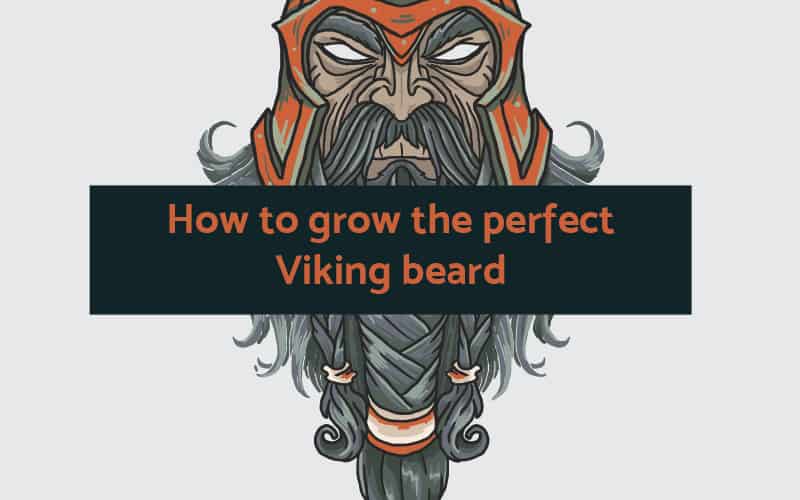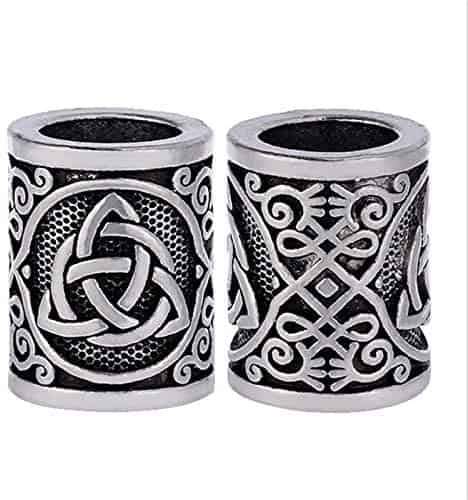Viking is the modern name given to seafaring people primarily from Scandinavia. From the late eighth century to the late 11th century, they raided, pirated, traded, and settled throughout parts of Europe. The Vikings had a massive impact on the early mediaeval history of Scandinavia, the British Isles, France, and a couple of other countries.
Beards became a trademark of Viking men. Most had shoulder-length hair and beards. The beard was a powerful symbol as only enslaved people had short hair. Some men involved in or had slightly shorter hair and beards for practical reasons.
The Scandinavian people were often well-groomed with neat hairstyles and expressed their wealth wearing expensive clothing. They had well-crafted jewellery – something that is also worn in the beard.
A well-groomed beard is thought to have been important, which signals rank and status to other people.
Beards were very important to this culture.
This article will explain all of the important aspects of a Viking beard and how you can grow and care for your very own Viking beard.
Article Contents
What is a Viking beard?
A Viking beard refers to a long, thick, dense beard and is tapered to a point on the front of the chin. The Viking beard can also be platted, tied, and adorned with silver or wooden beads.
The rules of growing out this beard are not set in stone and the style can be adjusted to suit the face shape of the individual wishing to grow a Viking beard.
Below, we will look at the defining features of a Viking beard and here are some of the best beard styles for you to use as inspiration.
The best Viking beard styles
someone with a Scandinavian heritage typically wears the Viking beard. That means that they have heritage from Denmark, Norway and Sweden. They typically are Caucasian in appearance and have a strong rustic look to accompany their beards.
Here are the viking beard styles that I found on the Internet:

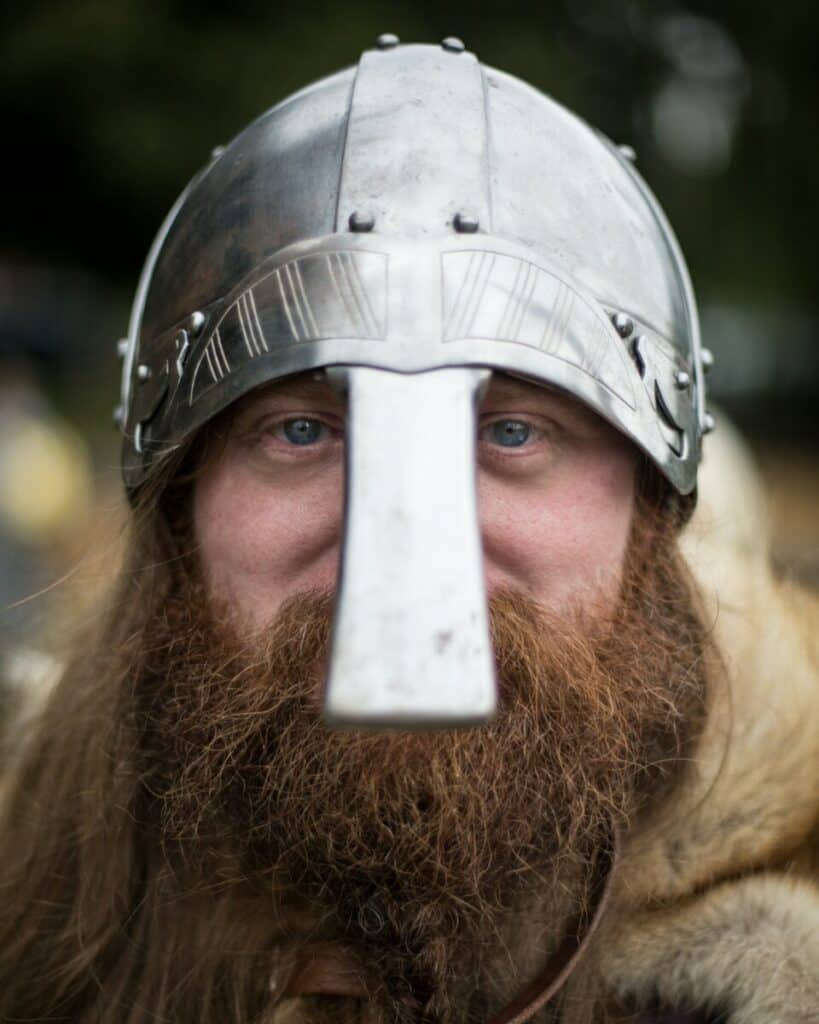
The popularity of a Viking beard
According to Google trends, we reached peak Viking beard popularity in November 2020. However, many people still love the look and rock a Viking beard.
Here is the data to show how the popularity of a Viking beard has changed over time from 2004 to the present day.

Defining features of a Viking beard
The defining features of a Viking beard typically come down to its colour, length, and trim style.
The components that push a beard into Viking territory can also include:
- The way the beard is tied under the chin,
- the number of braids or platts put into the beard
- any beads that are woven into the beard
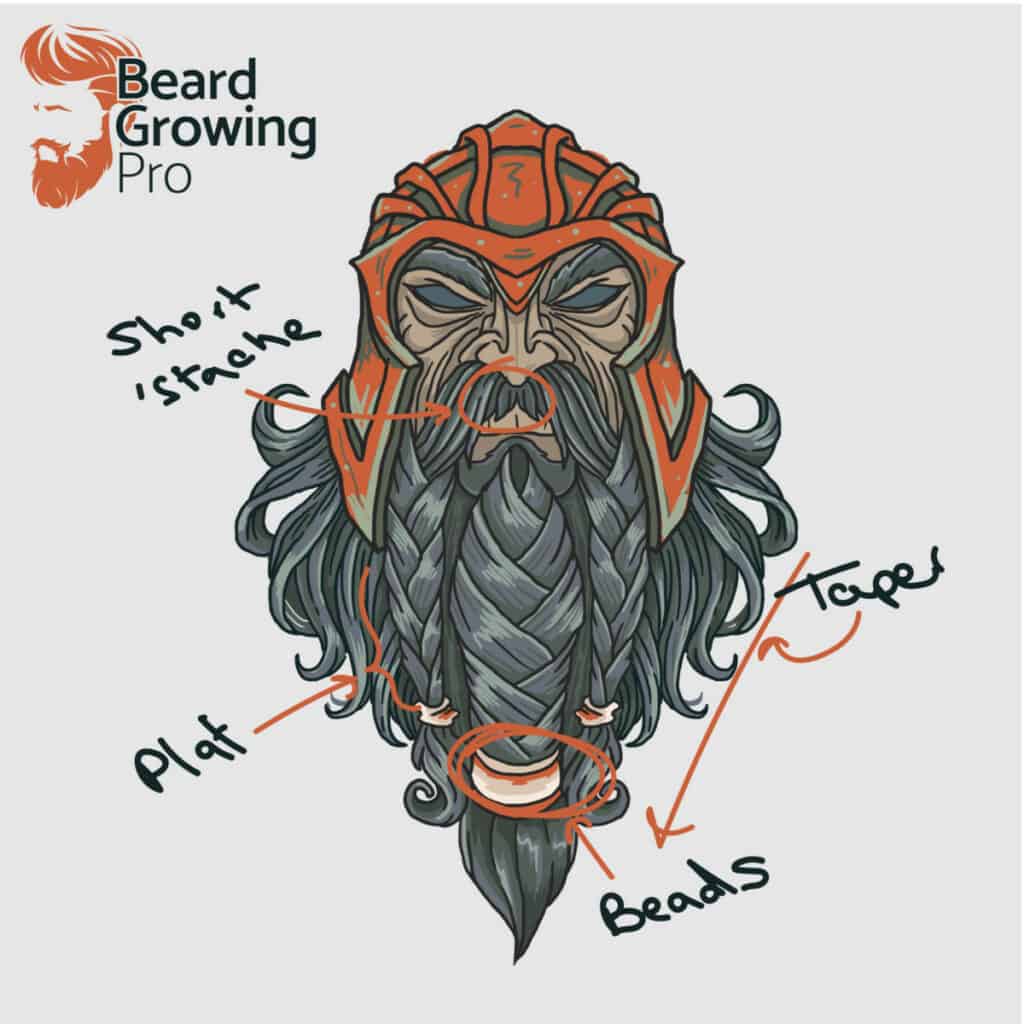
How long is a Viking beard?
There are varying lengths of Viking beards.
You can have a Viking beard with as little as 2 inches worth of growth. However, most people sporting a Viking style beard tend to have much longer beards.
A true Viking beard starts when you can comfortably plait and tie your beard into a considerable length beard ponytail.
Having skinny sides and longer chin hairs seem to be the defining feature of a Viking beard.
Moustache style
The moustache of a Viking beard tends to be cut short in the front and blends nicely into the beard on the sides.
Thick and full moustaches can accompany longer Viking beards, sweep to the side, and braided into the beard area.
The large flexibility of the moustache style means that a Viking beard can be the perfect option for many people. No matter what your growth density or style, you will be able to grow a good looking Viking beard.
Platt
You can truly embrace the Viking beard style once your beard is long enough to become platted. A Viking beard can be platted along the front, under the chin, or platted symmetrically on the sides of the beard.
Platting the beard involves taking three strands of equally dense beard areas and using a typical Platt style to weave them together. Some tips for creating a dense and good-looking Platt include:
- section of three areas of beard and hold with elastic bands
- straighten the beard hair with hair strainers before platting
- do not be tempted to Platt wet hair as it can be damaged much easier
- hold the Platt in place with a bead or hair tie.
Beads
Many beard beads can easily be woven into the beard and held in place with elastic bands or friction.
The beads are typically adorned with Celtic style decoration and are a metal alloy in keeping with tradition.
Check out the YouTube video below if you want to know how to put a beard bead into your beard.
The general steps of including a bead into your beard include:
- use a beader tool or some thread to make a loop
- Place the bead on the tool or thread
- Place your beard through the top of the loop,
- pull your beard through the bead using the tool or thread
- set the bead using a tiny rubber band or if you have enough hair, the friction will hold it in place.
It is highly recommended that you not use the plastic looping tool commonly provided with beading kits. These can damage your beard hair. Instead, get a thin metal wire beading tool or use thin thread.
Ties
If you do not like the look of a bead on your beard, you can opt for a simple hair tie to keep the beard together.
You can either use a hair tie at the centre point of your beard growth or have multiple ties going down the length of the beard.
Tapered or rounded
Most Viking beards have a tapered point, with the longest point being the centre of the chin.
However, there are plenty of examples of Viking beards with rounded bottoms.
Importantly, the slightly wiry nature of the beard is the defining feature. Most people would opt for a tapered point for a Viking beard; however, you can get away with a much more rounded bottom if you have particularly dense beard growth.
Style
There is no doubt that the beard is closely related to a rugged and weathered look aesthetic.
The aesthetic of a Viking beard includes muted and dark tones. Weathered seafaring hair. And a strong and distinguished face.
The men sporting a Viking beard typically have distinguished features and lighter hair and skin. With their features primarily coming from Scandinavian heritage.
For some reason, I also imagine them as very big and muscular men.
Getting the overall look to support your Viking beard will help you nail the style whilst creating a strong and defined look.
How to grow a Viking beard
Viking beards are best matched to round, oval, and square face shapes. However, it can also accompany triangle, diamond, and heart face shapes without looking odd.
Growing a Viking beard can fit such a wide variety of fake shapes that it is becoming more and more popular.
The slightly rugged nature of the beard can also give you the ability to relax a little bit in the maintenance department.
Here is how you can grow an impressive Viking beard and keep it looking sharp.

Six months to one-year growth
To grow a nice big thick, luscious Viking beard, you will have to grow out your beard for at least six months.
To properly support a Viking beard, you will have to grow your chin hairs long enough to sit at least 1 inch of your face.
During your beard’s growth phase, you may be tempted to cut in shape early on – please don’t.
Make sure that you grow out your beard for as long as possible before cutting in any shape. You may be tempted to give a little bit of a trim to the sides.
The longer you can go without cutting your hair, the better.
How to trim your beard like a Viking
Trimming your beard into a Viking shape requires you to taper the front of the beard to a point and keep the hair on the sides of your face short.
You can do that using a trusty pair of trimmers. There are a couple of rules for trimming your beard to keep it looking as Viking like as possible.
Keep the moustache short at the front
the moustache area of your beard should be kept short so that it does not touch or overlap the lips.
If you want a fuller moustache, you need to grow it out so that it can be swept completely clear of the mouth.
If you have a fancy moustache, you can easily blend into the bulk of the beard or Platt the sides of the moustache to double down on the Viking look.
Choose a tapered or rounded bottom
The quintessential Viking beard has a tapered chin area.
Using a good set of beard trimmers, you should trim up the sides to taper the bottom, and it does not splay out from your jaw.
You can slightly round the bottom if you do not like the look of a completely tapered Viking beard, but you must always have the longest point directly in the middle of the chin.
Other important factors include:
- leaving a relatively messy neckline
- cleaning up the cheek line
- connecting the beard to the hair using a fade
- applying beard wax or oil to hold the beard in place.
Consider adornments
No Viking beard is complete without a beard tie, a beard plat, or a beard bead.
Consider purchasing one or more of these items to fully show off your new Viking beard style to its fullest.
Look after it with balm and sea salt spray
A Viking beard is relatively unkempt.
There is an important balance between making sure that your beard looks sharp and like a Viking beard.
Most real Viking beards are relatively wiry and do not have defined lines.
Using a Matt wax or sea salt spray will be a fantastic way of adding texture to your Viking beard.
The pros and cons of a Viking beard
There are many pros and cons of growing a Viking beard, and here are some of the most important you should consider before doubling down on a Viking style.
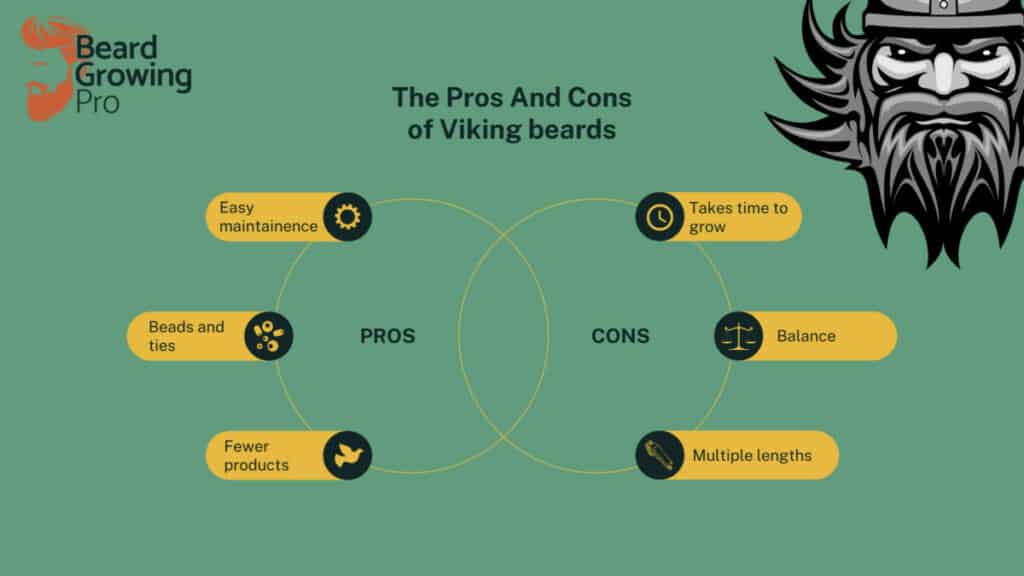
Pros of a Viking beard
The pros of a Viking beard include
- Unkempt look – having an unkempt look means that you can relax on some days and you do not have to look after your beard and if you were going for a much cleaner look. Remember that these beards originate from the seafaring adventurer without access to scissors or beard products.
- Fewer hold products – I love a Viking beard because it does not require much product to keep it looking authentic. The smallest amount of product you use in the hair, the better the Viking beard will look. Create the look with trimming rather than products.
- Can use beads and ties – sometimes I miss out on the extra style components that a hair tie or be can provide to your beard. Having a Viking beard is the perfect way to play around with extra adornments to your beard, such as beads. Who says having a beard can’t be fun.
Cons of a Viking beard
- It takes a while to grow – growing a traditional Viking beard means taking at least six months to grow. Not suitable for those who need a beard quickly or are impatient during the growing process.
- It is hard to keep and find the balance of scruffy and trendy – while growing out a Viking beard; I think it will be relatively difficult to find the balance between shabby and Viking. A fine line can be hard to find when you are first getting used to your Viking beard care. I recommend sea salt spray for adding the matte texture to your beard.
- Multiple lengths – the multiple lengths of a Viking beard means that it may be difficult to keep on top of the trimming required to keep it looking sharp.
Remember that you don’t have to go all out on your Viking beard, and you may want to use a Viking beard for inspiration for your next beard style.
Viking beard hats
If your significant other or friends get jealous of your newfound style, you can always buy them a Viking beard hat to join you in your new style and reap all of the benefits of having a Viking beard without growing one themselves.



Of course, it won’t look nearly as good as yours!
The final word
This article has been through everything you need to know about Viking beards and the best way to trim, maintain, and grow your very own Viking beard that you will be proud of.
This beard style has been very popular with increasing popularity up until 2020. Because of its strong style and unique features, I don’t think we’ll see a Viking beard disappearing from the beard growing scene soon.
Remember to taper your beard after about six months’ growth, and don’t be scared of using beads or Platt’s for doubling down on the awesome Viking beard style.

